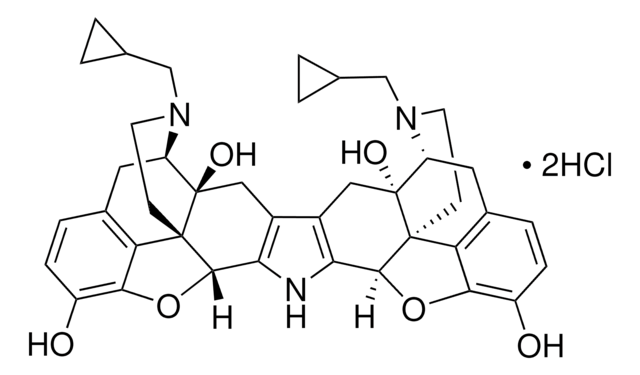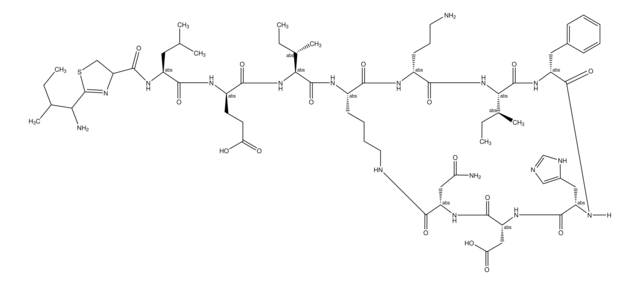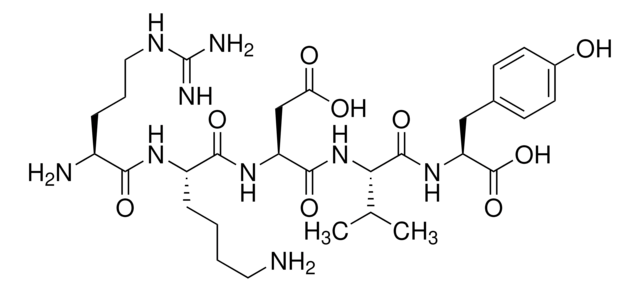O001
β-Chlornaltrexamine dihydrochloride
solid
Synonym(s):
β-CNA
About This Item
Recommended Products
form
solid
Quality Level
drug control
regulated under CDSA - not available from Sigma-Aldrich Canada
color
white
solubility
H2O: soluble (use aqueous solutions immediately.)
ethanol: soluble (is stable for ca. 1 month in the freezer.)
polar organic solvents: soluble
storage temp.
−20°C
SMILES string
Cl.Cl.Oc1ccc2C[C@H]3N(CC[C@@]45[C@@H](Oc1c24)[C@@H](CC[C@@]35O)N(CCCl)CCCl)CC6CC6
InChI
1S/C24H32Cl2N2O3.2ClH/c25-8-11-27(12-9-26)17-5-6-24(30)19-13-16-3-4-18(29)21-20(16)23(24,22(17)31-21)7-10-28(19)14-15-1-2-15;;/h3-4,15,17,19,22,29-30H,1-2,5-14H2;2*1H/t17-,19-,22+,23+,24-;;/m1../s1
InChI key
JJZDLJGFHABVOM-QNWHWJQFSA-N
Biochem/physiol Actions
Features and Benefits
Caution
Storage Class Code
11 - Combustible Solids
WGK
WGK 3
Flash Point(F)
Not applicable
Flash Point(C)
Not applicable
Personal Protective Equipment
Regulatory Information
Choose from one of the most recent versions:
Certificates of Analysis (COA)
Don't see the Right Version?
If you require a particular version, you can look up a specific certificate by the Lot or Batch number.
Already Own This Product?
Find documentation for the products that you have recently purchased in the Document Library.
Our team of scientists has experience in all areas of research including Life Science, Material Science, Chemical Synthesis, Chromatography, Analytical and many others.
Contact Technical Service![[D-Ala2, N-Me-Phe4, Gly5-ol]-Enkephalin acetate salt ≥97% (HPLC)](/deepweb/assets/sigmaaldrich/product/structures/227/014/768064c2-9ae6-47bd-8550-e2aa5c3b61de/640/768064c2-9ae6-47bd-8550-e2aa5c3b61de.png)
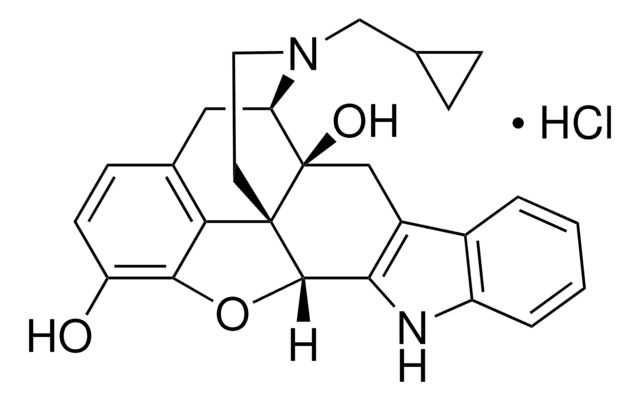
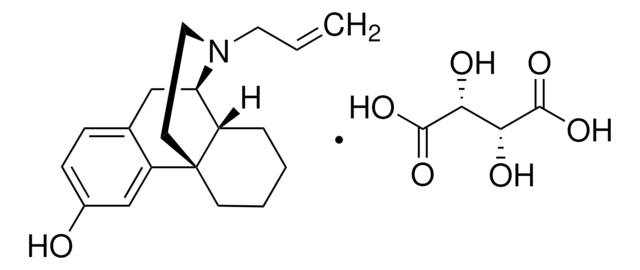
![[D-Pen2,5]-Enkephalin hydrate ≥95% (HPLC)](/deepweb/assets/sigmaaldrich/product/structures/184/136/1e0e1352-7665-406c-b51c-9a4fd9474b9a/640/1e0e1352-7665-406c-b51c-9a4fd9474b9a.png)
![[D-Ala2, D-Leu5]-Enkephalin acetate salt ≥95% (HPLC)](/deepweb/assets/sigmaaldrich/product/structures/934/176/d990e568-42df-43e9-a231-da7a3d9d7687/640/d990e568-42df-43e9-a231-da7a3d9d7687.png)
![[Met5]Enkephalin acetate salt hydrate ≥95.0% (HPLC), powder](/deepweb/assets/sigmaaldrich/product/structures/158/699/80b4b65b-7e48-49a2-ba61-4433cf1f375c/640/80b4b65b-7e48-49a2-ba61-4433cf1f375c.png)
